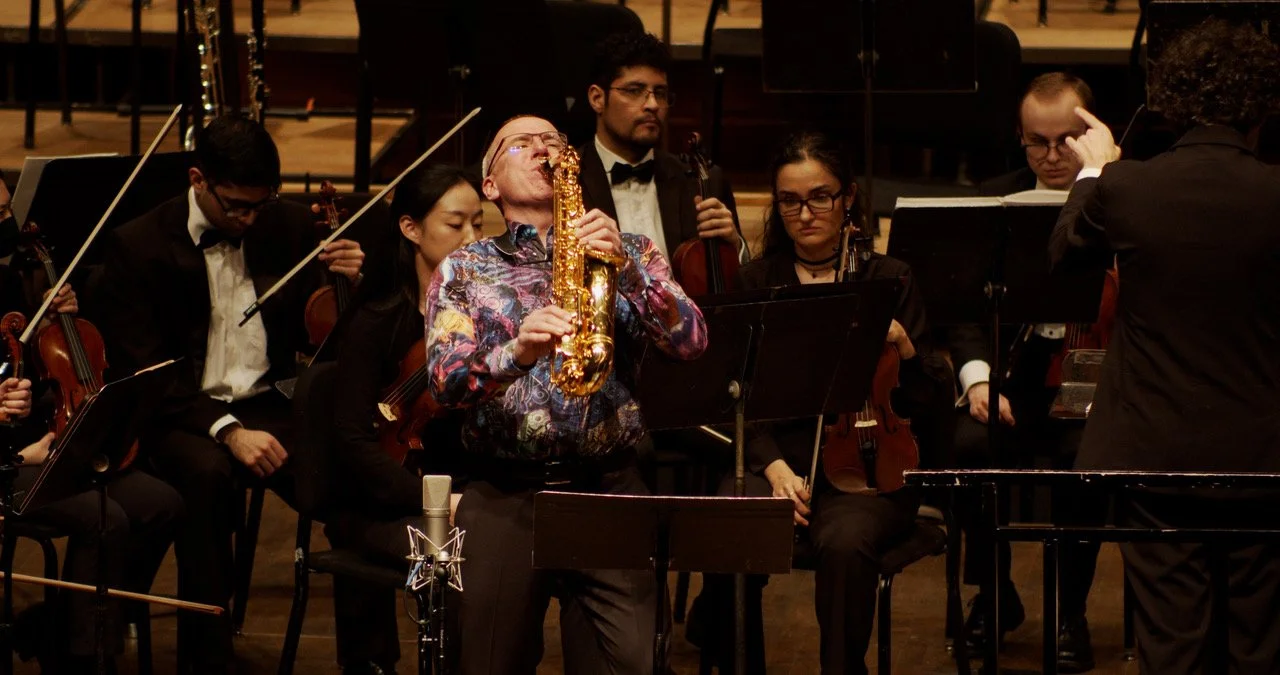KRAKATOA
by STACY GARROP
Concerto for alto saxophone or viola
with strings and percussion
Details
Instrumentation - Solo alto saxophone or viola, strings (suggested size: 12,10,8,6,4), timpani, 3 percussion
Duration - 19 Minutes
Composed - 2017 (Viola) / 2021 (Saxophone)
Commissioned by - the Barlow Endowment for Music Composition
Ordering Scores
To purchase the full score for concert performance or to view the online perusal score (to view a perusal score, click on the Score and Parts tab, then click on Preview below the window), please visit:
Booking Information
For information on performances and booking,
please contact Joe Lulloff at:
Program Note
On May 20, 1883, a cloud of ash rose six miles high above Krakatoa, a volcano nestled on an island in the Sunda Strait between Java and Sumatra. For the next two months, the volcano rumbled and spewed occasional dust and debris into the air, giving nearby inhabitants a spectacular show. On August 26th, Krakatoa turned deadly with an enormous blast that spewed pyroclastic flows (a blend of ash, lava, and gases) and pumice (lava that mixes with water and solidifies quickly into rock), and commenced a series of eruptions. On the next day, the volcano produced four enormous eruptions over four and a half hours. These eruptions were so loud (particularly the fourth) that they could be heard 3,000 miles away, and so devastating that two-thirds of the island sank back under the sea. The effects of Krakatoa’s eruptions were staggering: they sent shock waves into the atmosphere that circled the globe at least seven times; they triggered numerous tsunamis, the highest nearly 120 feet tall, which flooded and destroyed 165 coastal villages along with their inhabitants; and they propelled tons of ash roughly fifty miles up into the atmosphere. This ash blotted out the sun in Indonesia for days; it also lowered global temperatures for several years afterwards, and produced a wide range of atmospheric colors and phenomena. At least 36,000 people tragically lost their lives that fateful day. For the next forty-four years, Krakatoa was silent below the sea. This silence ended in 1927, when fishermen spotted steam and debris rising from the island. Within a year, a new volcano began to take shape above sea level. This new volcano is named Anak Krakatau, which translates to “child of Krakatoa,” and periodically experiences small eruptions.
Krakatoa for solo alto saxophone or solo viola, strings, and percussion follows the path of the volcano’s four main eruptions. In the first movement, Imminent, the violist uneasily plays as the orchestra (representing the volcano) shows ever-increasing signs of awakening. The orchestra bursts forth into the second movement, Eruption, where it proceeds through four eruptions that get progressively more cataclysmic. After the final and most violent eruption, the violist plays a cadenza that eases the volcano into the third movement, Dormant. In this final movement, the volcano slumbers, soothed by musical traits that I borrowed from traditional Javanese gamelan music: a cyclical, repetitive structure in which the largest gong is heard at the end of each cycle, and a musical scale loosely based on the Javanese pelog tuning system. The movement ends peacefully with an array of string harmonics, representing the intense and brilliantly colored sunsets generated by Krakatoa’s ash in the earth’s atmosphere.
Krakatoa was commissioned by the Barlow Endowment for Music Composition at Brigham Young University. -S.G.

